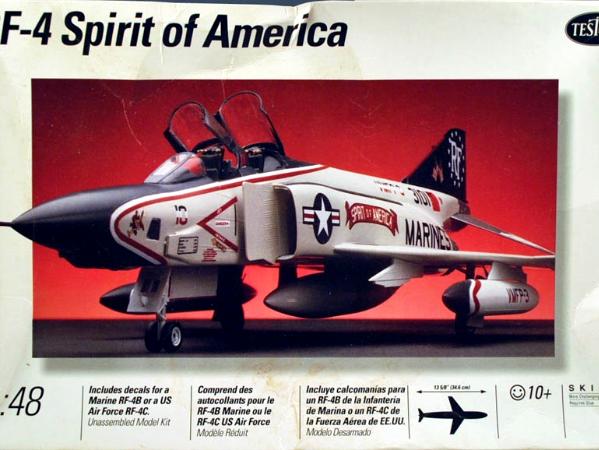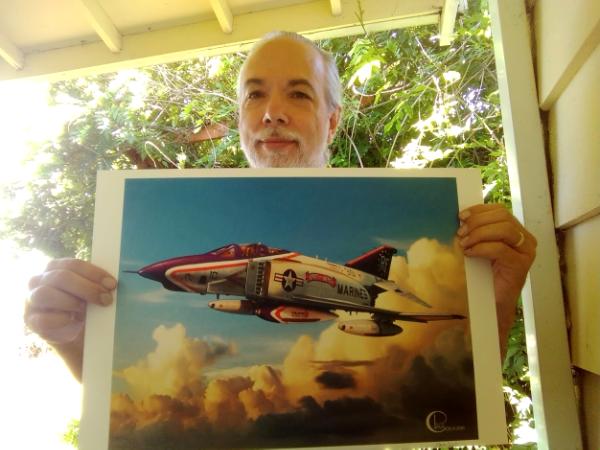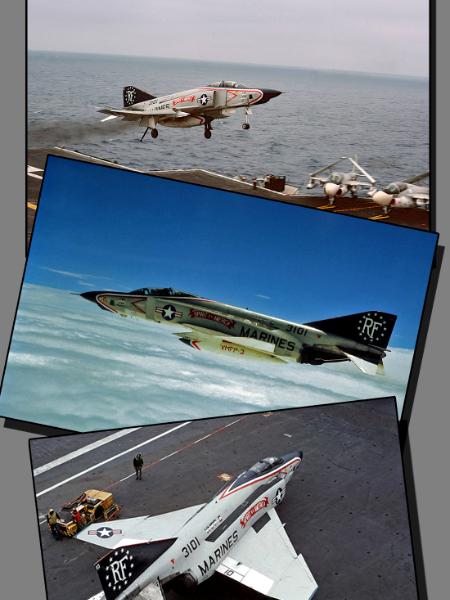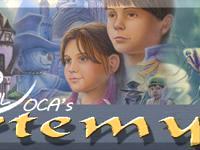8/9/20 |
"The whole is more than the sum of its parts."
In May of 1981– when I was 13 years old – I was one of many in Ely, Nevada who witnessed the crash of an RF-4 Phantom (BuNo 153101) which sadly took the lives of it's pilot, 1st Lt. Peter Joseph Keenan and radar intercept officer 1st Lt. William Dewey Lauerman III. We were in school, late on a Friday morning –the period just before lunch – when out through the classroom windows, we saw an F4-Phantom flying very low over the school and out over the town where it attracted a lot of attention. Indeed, it was awe-inspiring to see an aircraft like this at such close range! Unfortunately, the spectacle became a horrifying scene when the jet did an acrobatic maneuver – an aileron roll– over the distant hills and quickly bulleted nose down behind the ridge and exploded! The school erupted into commotion as students and faculty were shocked by what had just happened. The principal got on the intercom to calm us all down, "As you are all aware we just witnessed a tragedy. There is nothing we can do about it. The authorities and emergency crews will do what they can. For now remain calm." During our lunch break we could still see smoke and flames emerging from behind the distant hills that adjoin Squaw Peak (a mountain range that overlooks Ely and the Steptoe Valley). As would be expected, when the military arrived, the public was kept away from the area while they did their investigation of the crash and to clean up the wreckage.
That night, which was typical at the time, a lot of us kids spent the evening roller-skating at the armory. I recall hearing REO Speedwagon's "Take it on the Run", Hall and Oat's, "Kiss is on My List", Cool and the Gang's, "Celebration" and the GoGo's, "We Got the Beat" a few times that night as we made our laps around the makeshift roller rink our town provided. It was very dichotomous. Earlier we had just seen something awful and now here we were having fun.
About 2 weeks after the crash, my brother Marty and I decided to have one last adventure with our cousin Peter before we moved to Oregon. We wanted to investigate the crash site for ourselves. So, we made our way just outside of town beyond the city landfill, sneaking our way into the area near the crash site. We climbed up the desert hillside hoping not to be seen by the military personnel who were still in the area. Either they didn't see us or, at this point, they didn't care we were there. Hiding in the sagebrush on a rocky outcropping, we looked from above, down onto a dirt road that entered a canyon. From there we could see a few military personnel, their vehicles, and a dump truck with charred sections of the plane wreckage clearly visible on it. It appeared they were about to leave the area soon as they were strapping down and tarping over the remains of the plane. We silently made our way down the hillside, away from the area where the military crew were, into the shallow canyon and onto a narrow dirt road. We walked up the curvy road wondering where the crash area was. Nothing at first seemed unusual. It wasn't long, however, when it was obvious where the crash had occurred. We came upon an area of the canyon where the hillside was burned black, trees and brush scorched to charcoal and there was still debris and small sections of the plane remaining. The disturbing foul smell of the burned area was unforgettable. We spent some time with morbid fascination looking around and picking small up pieces of the plane. One thing that we saw still haunts me to this day– there were marking tags spiked into the ground, in various places, scattered about the area, with a biblical inscription on them. They indicated the location of where body parts were found. I will never forget that! I don't recall how long we were there (maybe a half-hour to 45 minutes) but the sun was setting and soon it would be dark. Having collected some small pieces of the plane we made our way home. When we got there, Mom was not happy with us for going to the crash area instead of staying home to help her pack for our move to Oregon. She made us throw away our morbid souvenirs. As an adult and a parent, I completely understand why.  Now that I am in my early 50's and have some perspective on what we had witnessed and saw at the crash site, I decided to face some of those haunted memories and work with them in a creative way. As a form of therapy, I used my artistic skills to "reassemble" the plane in a literal way. I first painted an illustration of the plane doing a lot research using its bureau number (BuNo 153101) in the process. In so doing, I was able to find the history of this particular F4-Phantom as well as historical photos of the aircraft in it's various paint scheme iterations. When it crashed, it was painted in basic military grey like the other aircraft it was stationed with in El Toro, California.  However, in 1976 BuNo 153101 was all decked out for the Bicentennial with it's "Spirit of America" design! Such a beautiful plane! I also discovered there was a model kit from Testors issued in the 1990's of that F4-Phantom in the "Spirit of America" color scheme. I was able to purchase the model from Rare Plane Detective (located in Cathedral City, California) and have it shipped to me in Oregon. When it arrived, I was a little nervous because there was some slight damage to the box. It had also been opened but upon doing an inventory I found that all but one small piece was there. The decals looked like they were in good condition but I made a high resolution copy of them encase there were age related issues. I could simply print up new ones if necessary. Here is the box as it arrived at my studio, a little aged and crinkled. Opening the box and doing inventory... The plane is in pieces but I am going to fix it! Assembling the cockpit and gluing the fuselage halves together. The camera bay is assembled and attached to the fuselage. Wings are glued into place. I use One Shot Clear Coat spray as a primer so I can use acrylic airbrush paints instead of enamel model paints. There is a lot of sanding and repainting to make all the seam transitions smoother. This model has vague instructions on exactly where to glue parts together and I relied a lot on Youtube videos of actual F4-Phantoms to show me exactly where the parts – especially the landing gear –attached to one another. I have attached the tail wings and painted in its heat shield at the back. At this point I am enhancing the panel details. I am now masking and airbrushing in the the black sections over the jet intakes, the white panels on the wings and the blue over the nose and around the canopy area. The model comes with decals that are to be used for the red and white ribbon that goes down the nose and around the canopy. I decided to hand paint that area instead –trusting in my paint abilities over the potential hassle the decals might create due to their age and the curving and rolling location on the plane's front section. The bottom of the plane is white but I also made sure it wasn't too clean by adding some areas of weathering and dirt. I am now adding the decals which, to my surprise, slide into place quite easily considering they are almost 30 years old! I am also adding a little weathering to the top of the model at this point. Time to tackle the landing gear! ...and the drop tanks! Sometimes I find it easier to One Shot prime and base paint some of the parts before cutting them away from the part trees. After a little hassle the landing gear are finally attached and painted! Center line and outboard tanks glued together with paint in process and decals to follow. The canopy is the final section I attached to the plane. Trying out a display option. I like the idea of a glossy wet look to the display base because it provides a reflective view of the plane's underside. Final photo shoot without the ground crew which I will be adding soon. For the most part, my model of the McDonnell Douglas F4-Phantom II (BuNo153101) "Spirit of America" is completed! It has been a fun project and a nice diversion during the pandemic. The last time I saw this plane it was in pieces and though there is no reasonable way to undo or fix the past, in a creative way, the mind has a way of healing past traumas. In gestalt therapy, " the whole is more than the sum of its parts". But also, without the parts there would be nothing to make up the whole, which is very similar to the Hua-yen way of seeing things!
Of course, there is still more to go. I just received a 1/48 scale ground crew with pilots to add to the scene. I will update this blog with more pictures as I make progress with the ground crew and their tools! Some of the ground crew are hard at work doing maintenance on the plane... Custom made boarding ladder for pilot... Illustration inspired by a low resolution photo of 1st Lt. Peter Joseph Keenan and 1st Lt. William Dewey Lauerman III about to board their aircraft. | 